5 tips from the Small Agency Conference on how to navigate contracts, M&A, the economy, AI and more
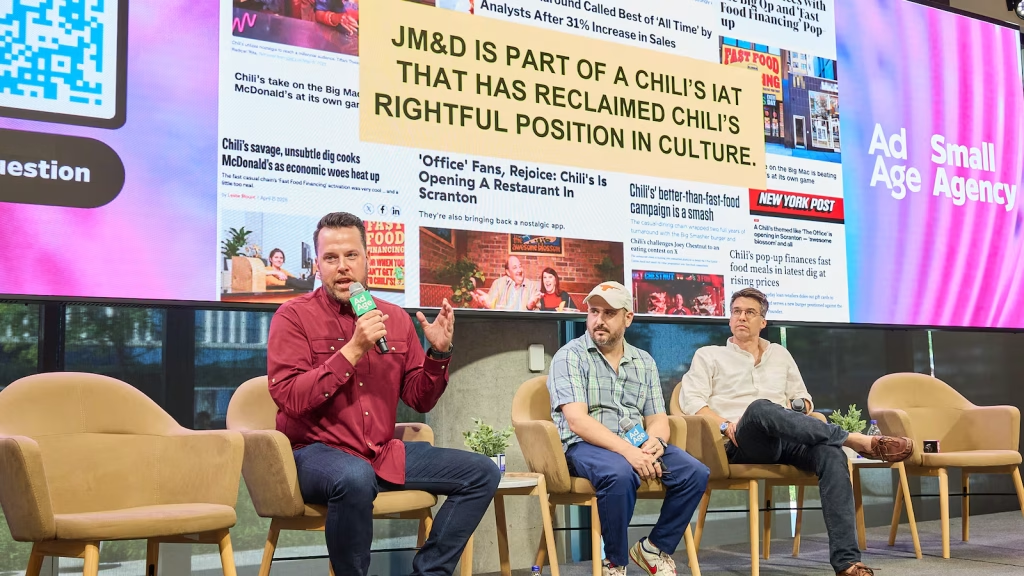
Chili’s offered advice on how small agencies can work with big marketers. L-R: Jesse Johnson, VP of marketing, Chili’s Grill and Bar; Jon Marshall, co-founder of JM&D; and Matt Sorrell, co-founder of JM&D. (Pawelec Photo Inc | IG: @pawelecphoto)
There’s a distinct wind at the backs of small independent agencies, but in an industry still dominated by ad holding companies—and roiled by seismic shifts in AI and the economy—challenges remain.
At last week’s Ad Age Small Agency Conference in Toronto, agency leaders, M&A advisers, financiers, legal experts and others gathered to help agencies with fewer than 150 employees navigate current headwinds and punch above their weight. Here are five key takeaways from the event.
Plus: Small agencies can save an industry getting swallowed alive by holding companies
How to work with bigger marketers
As more brands turn to small agencies, Jesse Johnson, VP of marketing at Chili’s Grill and Bar, offered advice for shops looking to court bigger marketers. He urged agencies to focus on filling clients’ specific needs instead of mirroring the structure of a larger agency. At Chili’s, for example, there are no creatives or designers, according to Johnson, so its agency partners—including JM&D, which appeared on stage with Chili’s—help address those gaps.
“If you can look [at a prospective account] and say, ‘What [is the client] missing that we can then help fill?’ you’re going to find a lot more value,” than simply pitching your broad capabilities and staff, he said. “The client’s going to feel that, person by person, you’re bringing more value to the business.”
Johnson also suggested that small agencies focus on landing project-based work rather than trying to win an entire account upfront, allowing big brands to see the agency in action without a long-term commitment. He also emphasized the importance of showcasing past work to build trust and reassured agencies that size shouldn’t be a concern if the agency can scale through strong relationships with directors or production partners.
How to get paid fairly for your work
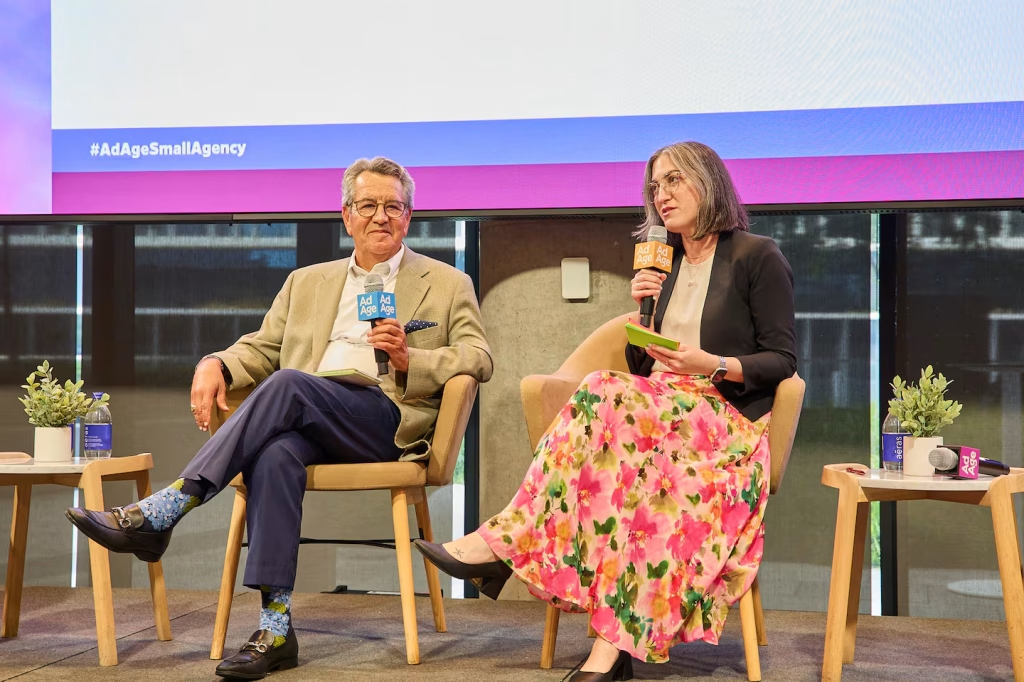
Licensing agreements can ensure agencies get paid a steady amount for their ideas, according to panelists. L-R: Davis+Gilbert partners Michael Lasky and Samantha Rothaus. (Pawelec Photo Inc | IG: @pawelecphoto)
With the rise of project assignments, more agencies are doing a lot of work—including preparing pitches—for little long-term payout. One way to protect against this is to strike a licensing agreement with clients that ensures agencies get paid a steady amount for their ideas, even if they are no longer working for the brand.
“It’s sort of unfair if you’re getting paid one time for one project and then it becomes a huge campaign for the client that they want to reuse year over year. So this helps to protect that,” said Samantha Rothaus, a partner at Davis+Gilbert, during a legal advice panel with fellow partner Michael Lasky.
Another way to get paid more fairly is to delineate when the pitch stops and the work begins, even before contracts are finalized. Lasky advised sending a basic email to the client setting the ground rules in “very clear, plain English,” including documenting that the client has given the agency authorization to proceed.
How to know if you’re ready for a private equity deal

Many shops are inking private equity deals, but it’s important not to rush the process. L-R: Courtney Lewis, David Rubin, Lindsay Rutherford, Michael Seidler and Ad Age’s Ewan Larkin. (Pawelec Photo Inc | IG: @pawelecphoto)
Agencies often think they’re ready for a private equity deal before they are, warned Michael Seidler, founder and CEO of M&A advisory firm Madison Alley. Hitting key thresholds—such as 15%–20% annual growth, healthy margins, low client concentration and in-demand capabilities like social or CTV—makes a shop more attractive, he said.
And size matters: investors are more interested once EBITDA hits the $5–$10 million range. If you’re not quite there, consider merging with a complementary agency to scale and dilute risk, added Seidler.
When exploring potential suitors, agencies should meet with similar companies within a PE firm’s portfolio to help vet the deal, said Courtney Lewis, CEO of The Variable, which has been backed by Svoboda Capital Partners since 2021. And, post-close, it’s worth putting structures in place to help the relationship run smoothly. For example, Svoboda brings on independent board directors—jointly selected with the agency—to offer outside perspective and fill operational gaps.
More: Inside the indie agency debate—private equity money is causing a stir
How agencies should respond to the changing economy
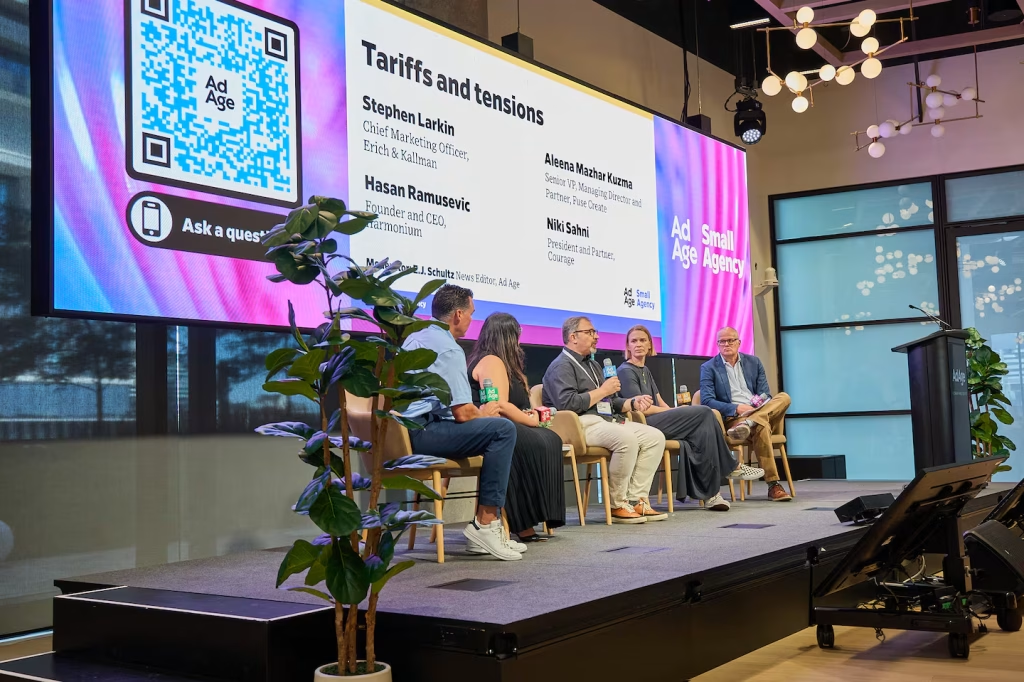
Agencies should focus on strengthening existing client relationships during economic uncertainty, panelists said. L-R: Stephen Larkin, Aleena Mazhar Kuzma, Hasan Ramusevic, Niki Sahni and Ad Age’s E.J. Schultz (Pawelec Photo Inc | IG: @pawelecphoto)
With the economy still on uncertain ground, agencies should take extra care to ensure their current clients are happy. “There’s going to be less new business to chase and you want to make sure that your clients don’t become someone else’s new business,” warned Hasan Ramusevic, founder and CEO of Harmonium, a consultancy that services clients and agencies.
That could involve offering existing clients new services and, in some cases, forming strategic alliances with other agencies to do so. If you are strong in creative strategy, you might consider partnering with a shop that offers media and audience insights “to bring science into your creativity,” Ramusevic suggested during a panel on how agencies should adapt to tariffs and the changing economy.
Agencies should also take the time to educate staff on the business and financial challenges facing chief marketing officers, which often go way beyond marketing. This includes being aware of supply chain issues.
The CMO’s job has “changed so much,” said Aleena Mazhar Kuzma, senior VP and managing director and partner at Toronto-based agency Fuse Create. “We have to follow that bouncing ball and understand each part of their business so that when we’re having conversations and providing recommendations, you have a complete, clear view of everything that’s going on.”
How small agencies are using AI beyond production efforts
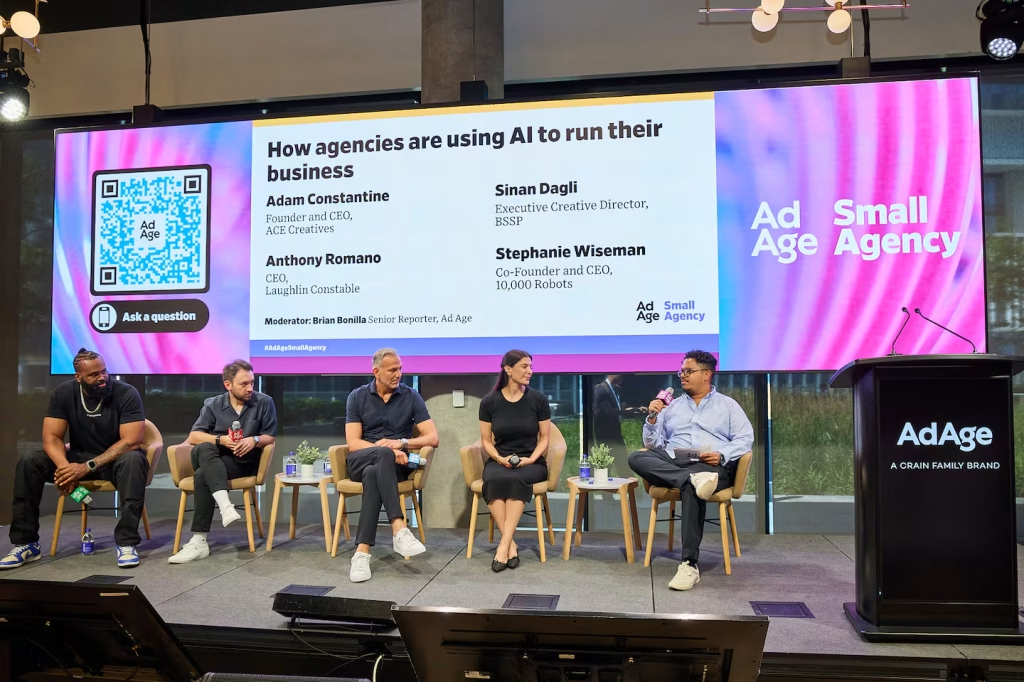
Agency leaders discussed how they’re using AI on stage at the Small Agency Conference. L-R: Adam Constantine, Sinan Dagli, Anthony Romano, Stephanie Wiseman and Ad Age’s Brian Bonilla (Pawelec Photo Inc | IG: @pawelecphoto)
Much has been said about generative AI’s impact on creativity and production, and the technology is also helping small agencies in several other ways. Laughlin Constable has developed an AI agent called Interplay that helps identify potential client matches by learning the agency’s strengths, win patterns and ideal brand partners. Interplay continuously scans the market and provides the agency with client recommendations weekly.
Laughlin Constable aims to open source Interplay soon, said CEO Anthony Romano, downplaying concerns about sharing secrets by stressing that the agency’s IP is in how the tool is used, not the underlying technology.
And one JB Smoove quote to go
“We talk about trends all the time. Trend is another word for copying.”—Comedian and actor JB Smoove at the Small Agency Conference, where he discussed his new agency, The First Darrin. “If you spell ‘trend’ backwards, it says ‘copy.’”
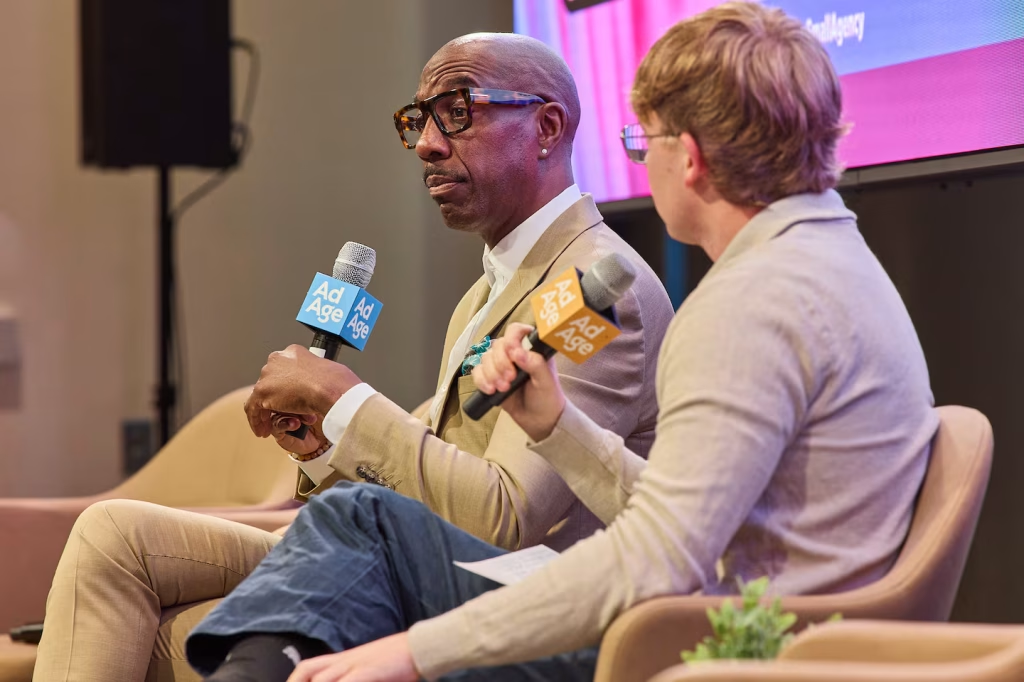
JB Smoove discussed The First Darrin on stage at the Small Agency Conference. L-R: JB Smoove and Ad Age’s Ewan Larkin. (Pawelec Photo Inc | IG: @pawelecphoto)
Read more: Ad Age Small Agency Award winners

